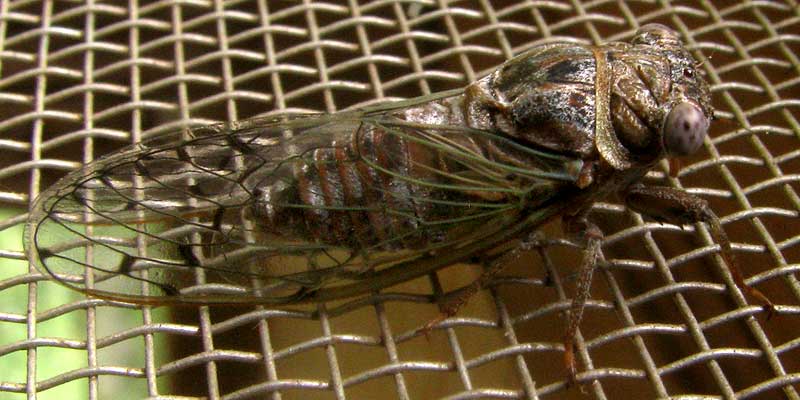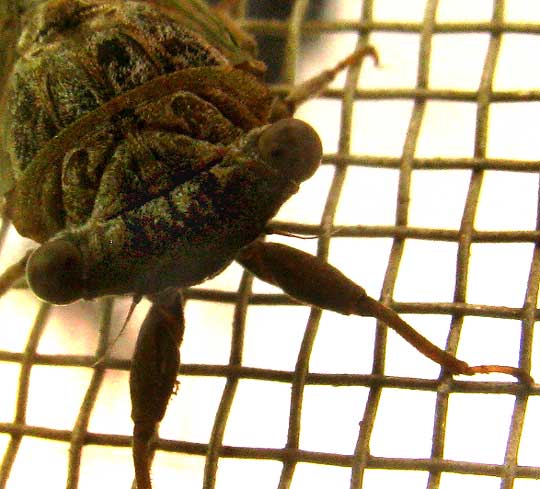Excerpts from Jim Conrad's
Naturalist Newsletter

from the June 29, 2014 Newsletter issued from the Frio Canyon Nature Education Center in the valley of the Dry Frio River in northern Uvalde County, southwestern Texas, on the southern border of the Edwards Plateau; elevation ~1750m (~5750 ft); N29.62°, W99.86°; USA
A DWARF CICADA
The next morning, in the same veranda corner where the Bulia Moth had been, the smallest cicada I've ever seen was placidly resting on the screen wire. Below, you can see how small it was compared to my finger:

The picture at the top of this page shows wing venation and other features to help in identification. An even closer look at the head is provided below:

My experience is that it's very hard to identify cicadas, unless you have a dissecting scope and are willing to dissect them. We have the scope but not the willingness to dissect them. Nearly fifty cicada species are listed for Texas. You can review a list of them, with some names linked to their calls and their BugGuide.Net page at http://www.texasento.net/Cicada_TX.htm.
As I was giving up trying to identify our tiny cicada I noticed that the above page was compiled by Mike Quinn, a freelance etymologist, so I shipped our pictures to him. He bounced them to Valerie Bugh (one wonders at "Bugh"), a collector in Austin and a producer of a bug-oriented website as idiosyncratic as mine and fun to browse, at http://www.austinbug.com.
Despite being unable to do the dissecting -- not that she'd want to -- she wrote, "It looks quite similar to our tiny species here in Austin, and there is a good chance it is the same: Pacarina puella. Not only 1/2 the size of other cicadas, but often the first to emerge each year."
So, that's great. Sometimes PACARINA PUELLA is called the Little Mesquite Cicada, and we have our Mesquites. In the US the species occurs where there are Mesquites -- Arizona to Oklahoma and Louisiana, but this cicada is mostly found in Mexico, where it's found in arid, presumably Mesquite inhabited, scrub-forest zones throughout, and south into Central America.
"A little cicada with a big head," someone said about it.